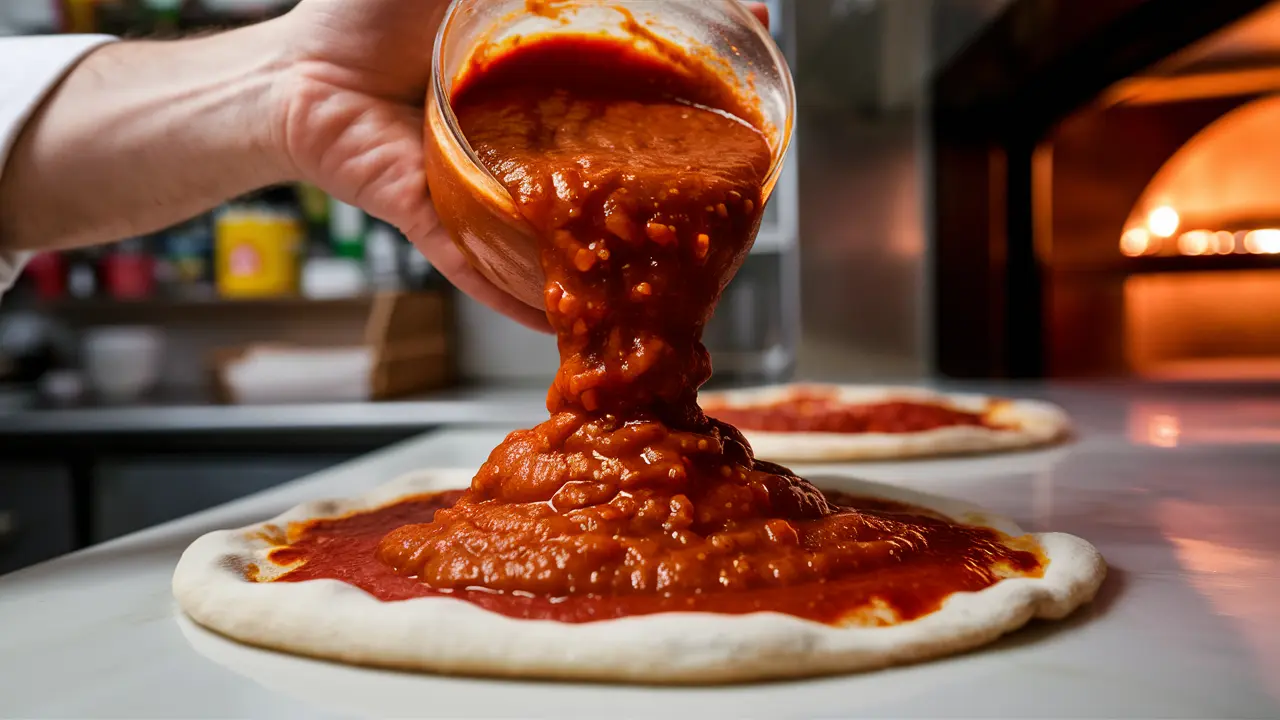If you’ve ever found yourself in the middle of making a homemade pizza only to realize you’re out of pizza sauce, you might have wondered, “Can I substitute spaghetti sauce for pizza sauce? This article will explore the frequent question of whether spaghetti sauce can be used as an alternative for pizza sauce. It will examine the distinctions between the two, suggest possible adjustments, and offer advice for effectively utilizing spaghetti sauce on pizza. By the end, you’ll know exactly how to handle this situation with confidence.
Can I Substitute Spaghetti Sauce for Pizza Sauce?
Introduction
Hook
The dilemma of running out of pizza sauce
Purpose of the Article
Understanding the differences and potential substitutions
What is Spaghetti Sauce?
spaghetti sauce is a staple in many households. It typically features tomatoes, garlic, herbs, and sometimes meat. Let’s break down the ingredients and preparation methods.
-
Ingredients and Preparation
- sauce for pizza usually includes tomatoes, onions, garlic, and various herbs like basil and oregano.
- The preparation involves simmering these ingredients to create a rich and flavorful sauce.
-
Common Variations
- Meat-based sauces, such as Bolognese.
- Vegetarian versions, which might include additional vegetables like bell peppers and mushrooms.
What is Pizza Sauce?
On the other hand, pizza sauce is designed specifically for use on pizzas. It often has a thicker consistency and a different flavor profile than spaghetti sauce.
-
Ingredients and Preparation
- Pizza sauce typically includes tomatoes, olive oil, garlic, and sometimes sugar for a hint of sweetness.
- The preparation focuses on creating a sauce that spreads easily and cooks well in a hot oven.
-
Common Variations
- Traditional marinara.
- White pizza sauce, which is a creamy alternative.
- Pesto, offering a fresh, herbaceous flavor.
Transitioning into the next section, we’ll examine the key differences between spaghetti sauce and pizza sauce to understand why substitution might be challenging.
Key Differences Between Spaghetti Sauce and Pizza Sauce
In the following segment, we’ll delve into the distinct characteristics of spaghetti sauce and pizza sauce, covering texture, flavor profiles, and cooking methods.
Key Differences Between Spaghetti Sauce and Pizza Sauce
-
Texture Differences
- Thickness and Consistency: Spaghetti sauce is often thinner, designed to coat pasta smoothly, whereas pizza sauce is thicker to prevent the dough from becoming soggy.
-
Flavor Profile
- Herbs and Spices Used: Pizza sauce typically has a simpler, more concentrated flavor, focusing on tomatoes and a few key herbs.
- Sweetness and Acidity: Pizza sauce might have added sugar to balance acidity, whereas spaghetti sauce often relies on a broader mix of herbs and ingredients.
-
Cooking Methods
- Simmering Time: Spaghetti sauce is usually simmered for a longer time to develop depth of flavor.
- Application Techniques: Pizza sauce is often applied raw to the dough, cooking fully in the oven, unlike spaghetti sauce, which is cooked before use.
Moving to the next part, we’ll explore whether you can substitute spaghetti sauce for pizza sauce, and how to modify it for the best results.
Can You Substitute Spaghetti Sauce for Pizza Sauce?
In this next phase, we’ll discuss the feasibility of using spaghetti sauce on pizza, including tips for modification and practical advice for making it work.
Can You Substitute Spaghetti Sauce for Pizza Sauce?
-
Feasibility of Substitution
- When It Works: You can use spaghetti sauce on pizza in a pinch if you make a few adjustments.
- When It Doesn’t Work: Avoid using spaghetti sauce directly from the jar without any modifications, as it can be too watery and overpowering in flavor.
-
How to Modify Spaghetti Sauce for Pizza
- Adjusting Consistency: Simmer the sauce to reduce water content, making it thicker.
- Balancing Flavors: Add extra herbs or a bit of sugar to adjust the taste, making it more suitable for pizza.
Continuing in the following part, we’ll delve into practical tips and recipes to help you modify spaghetti sauce effectively for pizza use.
